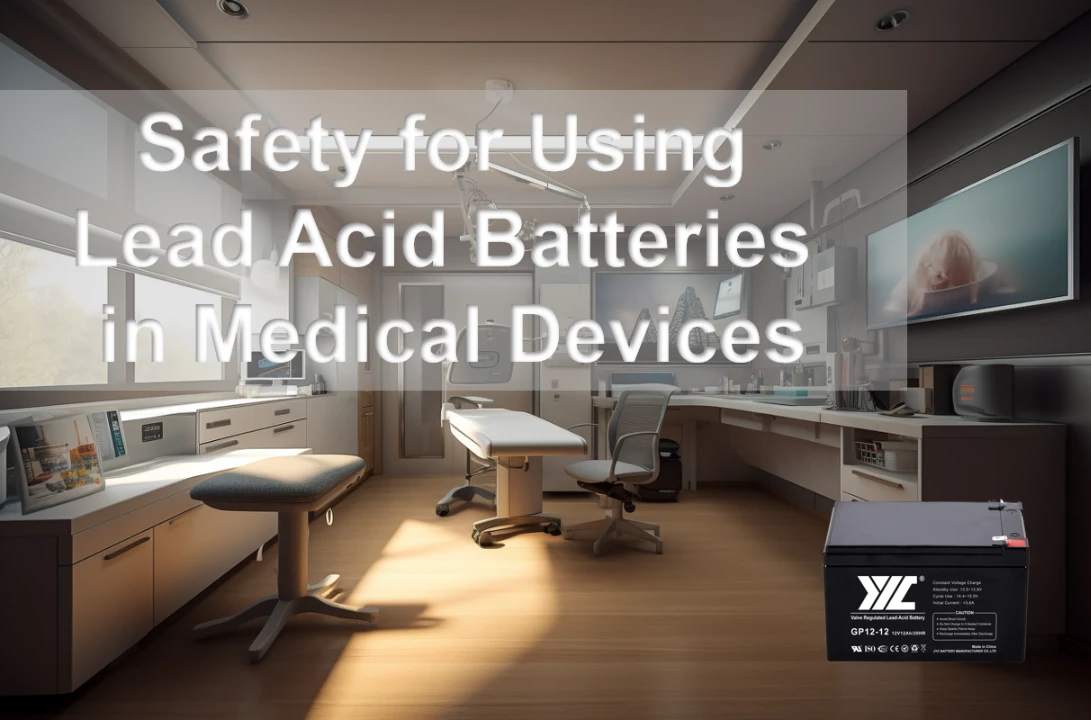
As medical technology progresses with time, the reliability and efficiency of medical devices increase heavily. At the core of many life-saving medical apparatuses lies an unsung hero – the Lead-Acid Battery. In this article, we celebrate the crucial role of Lead-Acid Batteries in driving medical equipment.
Benefits of Using Lead-Acid Batteries in Medical Equipment
Lead-acid batteries offer several benefits that make them a favorite power source for various medical devices. One of the significant benefits is their cost-effectiveness. In the ever-evolving landscape of healthcare, budget constraints can be a challenging reality. But, lead-acid batteries’ cost-efficient nature allows healthcare facilities to allocate resources smartly without compromising quality.
These batteries not only present an economical choice but also embody the essence of reliability and durability. In the realm of medical devices, flawless performance is not an option; it’s a necessity. These batteries ensure an uninterrupted power supply during critical procedures. Their aptitude for delivering consistent power allows medical professionals to rely upon these batteries when every second counts.
Furthermore, with a network of distributors and suppliers, Lead-Acid Batteries are typically available at local stores and online retailers. This makes them accessible to medical facilities of every size. The widespread availability ensures that replacements or back-ups can be obtained promptly, minimizing downtime in case of battery failure.
The Crucial Role of Choosing the Right Battery
The choice of lead-acid battery used in medical devices varies remarkably on its power requirement. An inadequate battery can result in faulty performance or even damage to the equipment.
Key considerations include the battery capacity, measured in Ah, and how much power the battery can supply. Understanding what kind of medical device will be operating on best-instrumented systems and matching each medical device with a corresponding battery capacity becomes essential to ensuring long operation without frequent recharging.
In addition, medical devices often operate in sensitive environments such as patient rooms or operating theaters. For these reasons, it is essential to choose low self-discharge rates of lead-acid batteries so that they can retain their charge for extended periods. This will result in less frequent recharging and ensure the devices are always ready.
Emphasizes Safety Measures for Using Lead-Acid Batteries in Medical Devices
While lead-acid batteries have numerous advantages, safety should be considered in medical facilities. To ensure a safe operation, operators must think of handling, ventilation, and charging problems besides maintaining maintenance problems as well as regulatory compliances.
1. Proper Handling and Ventilation of Batteries:
Medical practitioners and their staff responsible for handling lead-acid batteries should be trained to discharge the battery accurately. Carefully lift and transport a battery to avoid damaging, spilling, or leaking it. Adequate ventilation is required regarding the dispersal any potentially harmful gases that may emanate from lead-acid batteries during charging or operation.
2. Charging and Maintenance:
medical devices battery should be charged in a well-ventilated area away from flammable materials. Charging and maintenance, as prescribed by the manufacturer, are primarily imperative to prevent overcharging or undertaking, which will result in battery failure or lowered performance.
3. Personnel Training:
The medical staff needs to be trained appropriately to handle lead-acid batteries adequately and use safety protocols optimally. Proper training minimizes the risk of any accidents too. It also ensures that batteries are correctly incorporated into the medical devices they energize.
4. Regulatory Compliance:
Medical facilities must abide by all the regulations and guidelines on using lead-acid batteries in medical devices. Compliance with safety standards ensures that the batteries hold the necessary quality and safety requirements for medical applications.
Final Words
Lead-acid batteries play a significant role in powering medical devices, offering cost-effectiveness and reliability. Nevertheless, choosing the right battery and laying down safety measures are to be imbued so that medical equipment operates smoothly sans mishaps. Considering the requisite power requirement of medical devices and taking proper handling, ventilation, charging, and maintenance procedures can indeed achieve its full potential while prioritizing patient safety and care.



